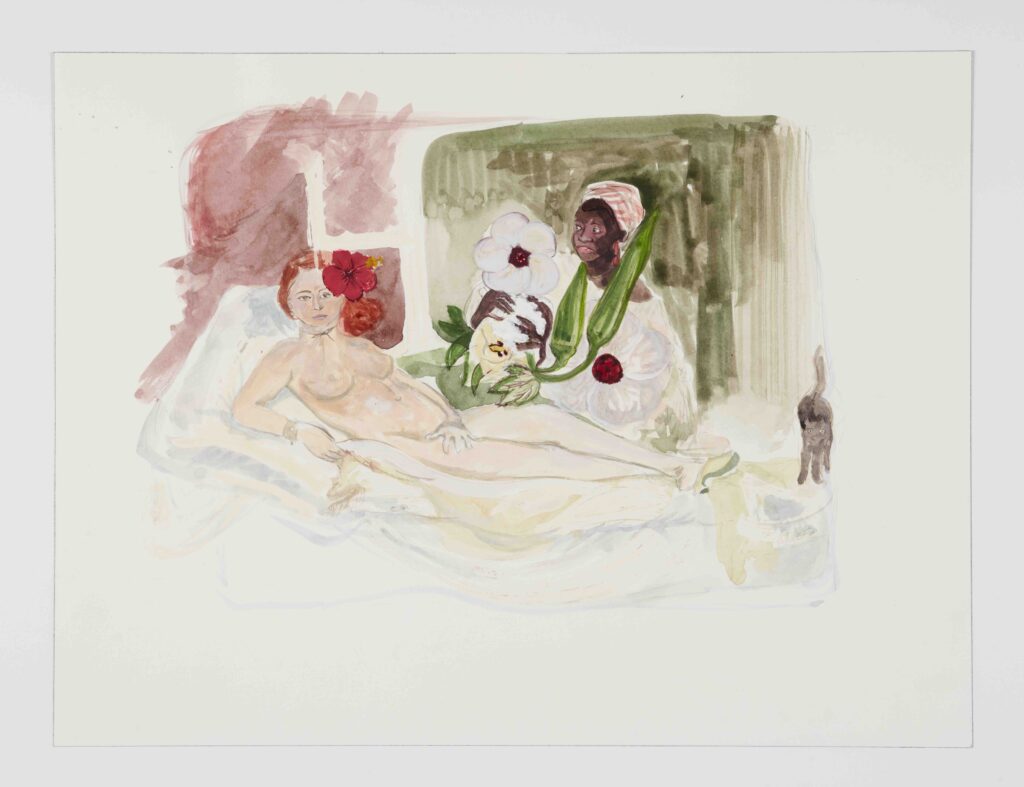To look upon Camille Claudel’s Torso of a Crouching Woman is to be shocked by it. Though the figure lacks a head, arms, and left knee, she is stolidly centered. The burnished bronze figure writhes, pulling the skin and tendons taut across the delicate bones of her back. The attenuated surface, animated by the innumerable minuscule movements required to maintain the figure’s equilibrium, trembles with life. The absence of the left knee, lower thigh, and upper shin exposes the figure’s breasts and abdomen; her bottom rests on the back of a sudden ankle. Despite the violence of the cleaved limbs, the sculpture radiates tenderness.
The work, one of 58 in the Getty Center’s recently opened exhibition on Claudel, transcends its fragmentary parts. After all, what woman has not been broken apart and yet endured? The figure’s plight and posture inevitably recall the anguish and desperation experienced by the artist as a 19th century woman determined to transcend the limitations of her time.
Claudel’s life story has often superseded her work. The best-known parts were both astonishing and tragic: her tumultuous relationship with her mentor, Auguste Rodin, who was both twenty-four years her senior and already a world-renowned sculptor, and her decades-long confinement in a mental hospital until her death. And much has been written about Claudel’s fraught familial relations and the immense mental and physical strain that she endured in order to make art at a time when women were primarily considered domestic property. However, curators Anne-Lise Desmas at the Getty Center and Emerson Bowyer at the Art Institute of Chicago, where the show initiated, furnish Claudel with a new story, deftly resurrecting the arc of her life and the revelation of her creative output.
The Getty show spans her oeuvre, from early portraits of her beloved brother to the bronze commissioned by the French state just before her internment, Wounded Niobid. In each, one can see both her prodigious natural facility and the distillation of her singular vision after years of self-discipline and study. From an early age, Claudel displayed an aptitude for sculpture and an intuitive feeling for light and shade. At 17, she was accepted to the Académie Colarossi–one of the few French art institutions to admit women–and by 20, was the principal assistant at Rodin’s rue de l’Université studio.
Torso of a Crouching Woman, model about 1884–1885; cast by 1913, Camille Claudel.
To love Rodin’s exquisite hands is to love Claudel’s, both literally and metaphorically. Not only did Rodin model Claudel’s hands in many works, she herself fashioned many of the hands, feet, and heads included in some of his most monumental commissions, like The Gates of Hell, ostensibly a scene from Dante’s Inferno and The Burghers of Calais, a commemoration of French heroism. At the Getty, a striking selection of disembodied appendages and miniature heads demonstrate her anatomical acuity and an uncanny ability to imbue inanimate material with life. This ability is never more striking or haunting than in Study of Left Hand, a 10-inch black-bronze hand, its curved index finger hovering above the knuckles poised to extend toward the unassuming viewer an accusatory point. One can hardly imagine the innumerable times that Claudel, in acquiescence or resistance to her fate, held out her hands. She offers them again now.





